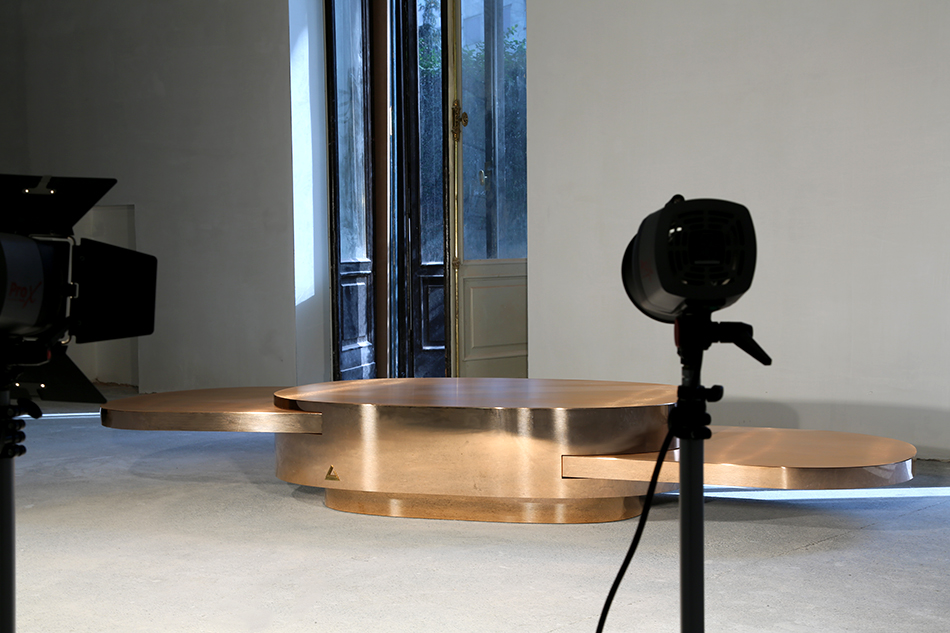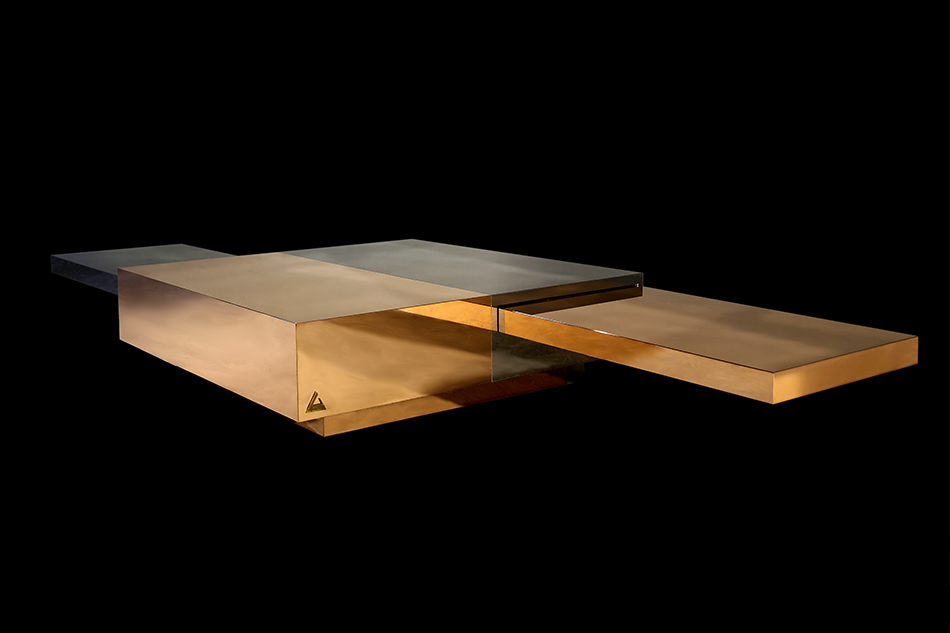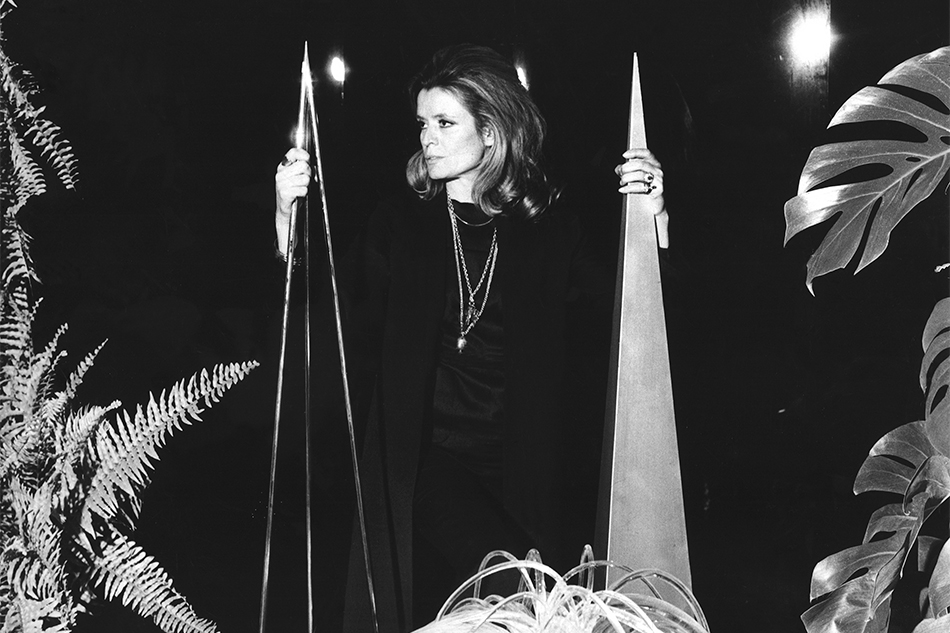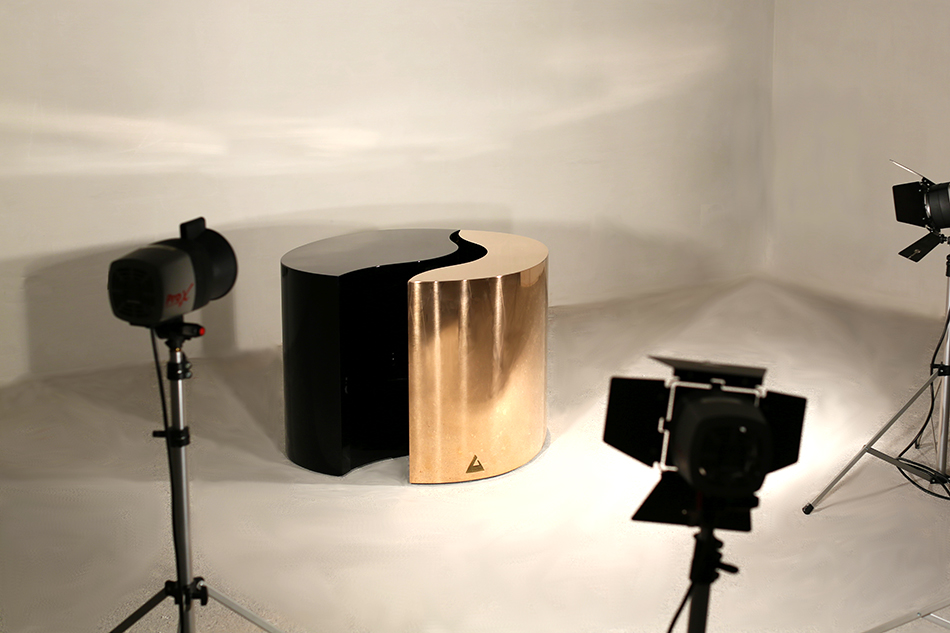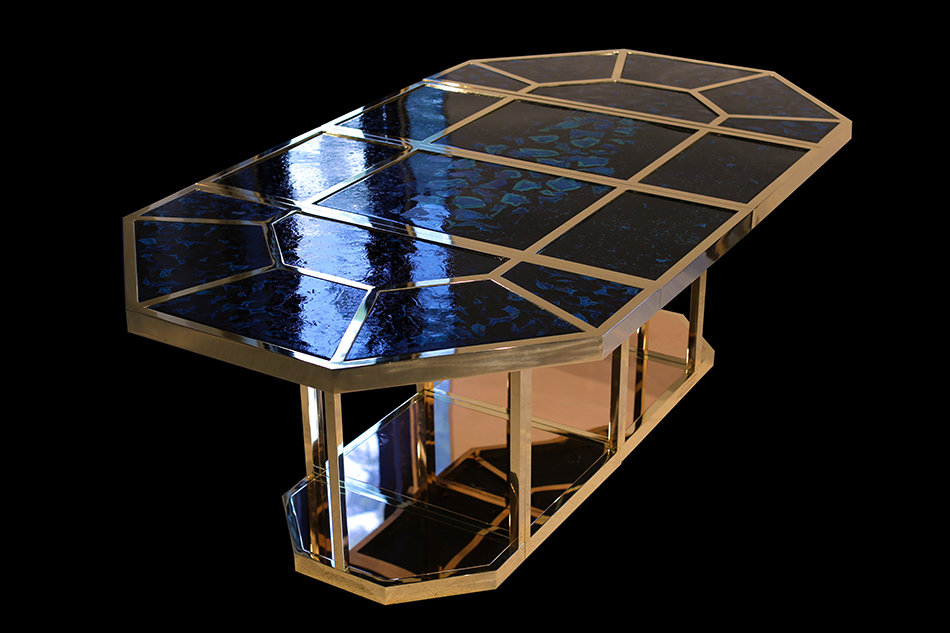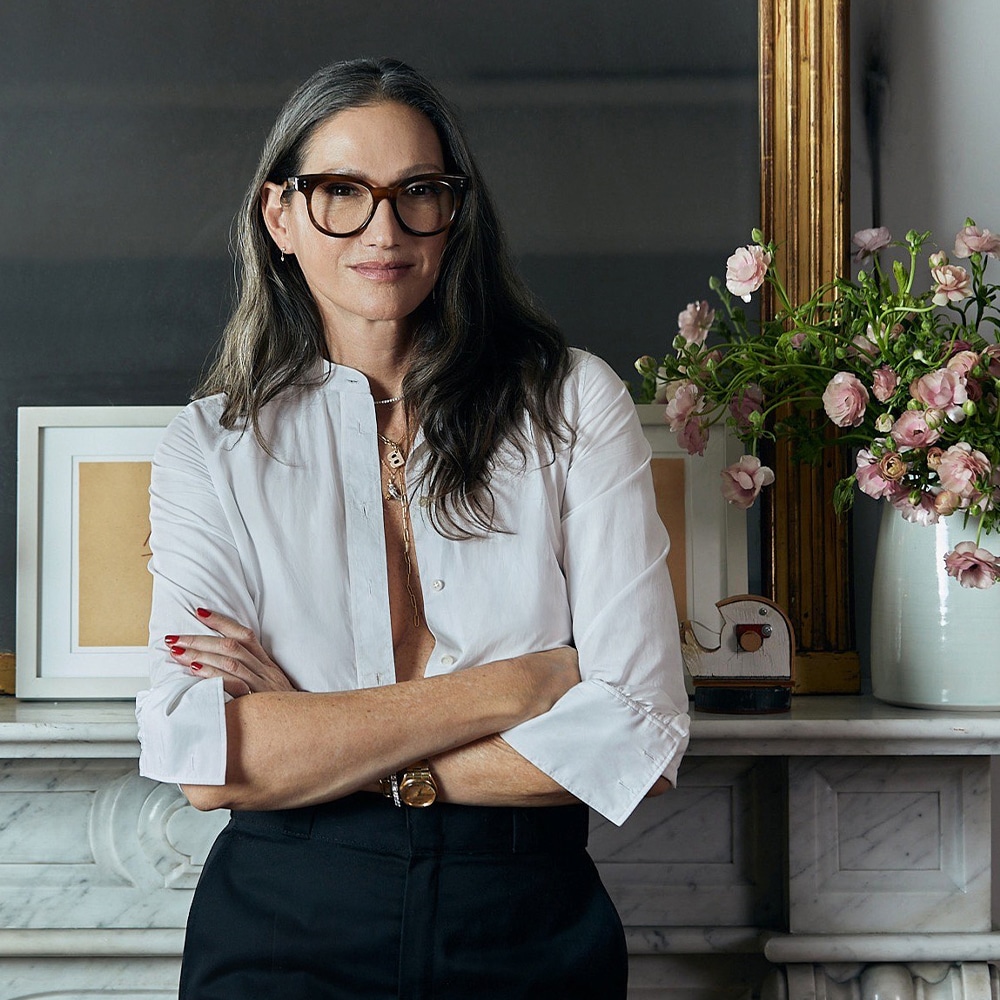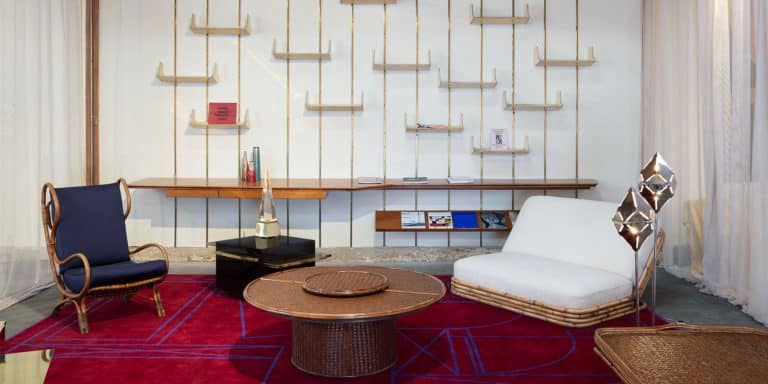
April 13, 2015Gabriella Crespi, the subject of “The New Bronze Age” show at Milan’s Rita Fancsaly, is seen here in 1970 among Kaleidoscope lights from her Unicum collection (photo by Oliviero Toscani). Top: A detail of Crespi’s Ellisse table shows her signature metallic finish.
Bronze discs that open up like clamshells for storage and fold back in to become side tables. Sleek cubes barely suspended off the ground that transform into full-size dining tables. Clean-lined boxes that contain multi-level shelving. Looking at the work of Italian designer Gabriella Crespi, born in 1922 and still producing furniture in her Milan studio, it’s hard to believe that many of these highly functional pieces — a modernist Rubik’s cube of materials, color and ergonomics — were created almost 50 years ago.
“New Bronze Age,” an exhibit at Milan’s Rita Fancsaly Gallery running from April 14 to May 14 and coinciding with Salone Internazionale del Mobile, the city’s famous furniture fair, puts the spotlight on four of Crespi’s most iconic pieces (with nine limited-edition reissues of each on offer), including her bronze Ellisse table, 1976, and her Yang-Yin bronze-and-lacquer bar, 1979. These pieces encapsulate a designer who had a strong dualism in her vision, mixing humble and precious materials, for instance, or creating geometric shapes that were softened by sensual surfaces. “For me,” explains gallery owner and curator, Rita Fanscaly, “her pieces transcend furniture; they are sculptures.”
Crespi began studying architecture in 1944 at the Politecnico, in Milan, where she was among just a handful of women, and became profoundly influenced by the work of Le Corbusier and Frank Lloyd Wright. After getting married and having children, she launched her own collections, from jewelry to furniture, and soon gained a loyal following, with design houses such as Maison Dior snapping pieces up for their own lines.

Crespi’s Z desk, first designed in 1974, will be reissued in a limited-edition of nine for the exhibition at Rita Fancsaly, which runs from April 14 to May 14.
She began work on her most iconic collection, “Plurimi,” in the late 1960s, and the series — playing on the themes of volume, light and adaptability that Crespi has explored throughout her career — flourished through the 1970s and early ’80s. Her Dama table from this series is one of the centerpieces of “New Bronze Age,” as is the Z desk, from a mid-1970s series. The piece manages to be both stylish and humorous, looking like it’s ready to leap off the floor at any moment.
Well-born and beautiful, Crespi garnered a lot of attention among the jet set. She was a muse to Valentino, and her pieces started to appear in the homes of Princess Grace of Monaco, the Shah of Iran and Greek shipping magnate George Livanos. In 1987, with her children now adults, the designer surprised everyone when, after a meeting with guru Sri Muniraj, she moved to India to study with him and live at the foot of the Himalayas. This turned into a 20-year self-imposed exile that if anything, made her pieces even more sought-after.
Today, at 93, Crespi still produces new work. Indeed, one of the standout pieces in “New Bronze Age” is Crespi’s new Puzzle table — a first-time collaboration with architect Franco Deboni (Fancsaly’s husband) — that features bronze inlaid joints alongside pieces of blue Murano glass that look like they are traced with leaves. Like so much of her work, Crespi remains full of surprises.

